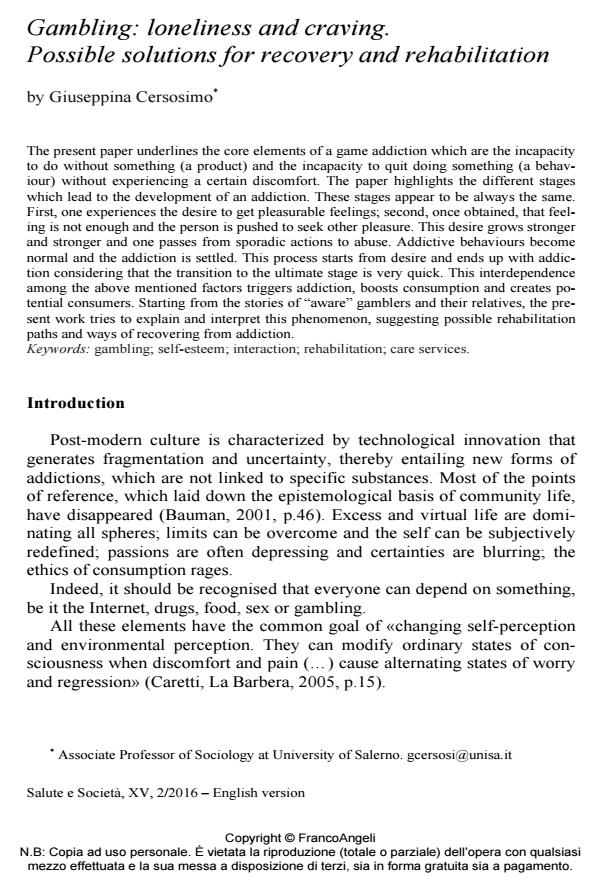Gambling: loneliness and craving. Possible solutions for recovery and rehabilitation
Titolo Rivista SALUTE E SOCIETÀ
Autori/Curatori Giuseppina Cersosimo
Anno di pubblicazione 2016 Fascicolo 2016/suppl. 2
Lingua Inglese Numero pagine 15 P. 112-126 Dimensione file 99 KB
DOI 10.3280/SES2016-SU2009
Il DOI è il codice a barre della proprietà intellettuale: per saperne di più
clicca qui
Qui sotto puoi vedere in anteprima la prima pagina di questo articolo.
Se questo articolo ti interessa, lo puoi acquistare (e scaricare in formato pdf) seguendo le facili indicazioni per acquistare il download credit. Acquista Download Credits per scaricare questo Articolo in formato PDF

FrancoAngeli è membro della Publishers International Linking Association, Inc (PILA)associazione indipendente e non profit per facilitare (attraverso i servizi tecnologici implementati da CrossRef.org) l’accesso degli studiosi ai contenuti digitali nelle pubblicazioni professionali e scientifiche
The present paper underlines the core elements of a game addiction which are the incapacity to do without something (a product) and the incapacity to quit doing something (a behaviour) without experiencing a certain discomfort. The paper highlights the different stages which lead to the development of an addiction. These stages appear to be always the same. First, one experiences the desire to get pleasurable feelings; second, once obtained, that feeling is not enough and the person is pushed to seek other pleasure. This desire grows stronger and stronger and one passes from sporadic actions to abuse. Addictive behaviours become normal and the addiction is settled. This process starts from desire and ends up with addiction considering that the transition to the ultimate stage is very quick. This interdependence among the above mentioned factors triggers addiction, boosts consumption and creates potential consumers. Starting from the stories of "aware" gamblers and their relatives, the present work tries to explain and interpret this phenomenon, suggesting possible rehabilitation paths and ways of recovering from addiction.
Parole chiave:Gambling; self-esteem; interaction; rehabilitation; care services.
Giuseppina Cersosimo, Gambling: loneliness and craving. Possible solutions for recovery and rehabilitation in "SALUTE E SOCIETÀ" suppl. 2/2016, pp 112-126, DOI: 10.3280/SES2016-SU2009